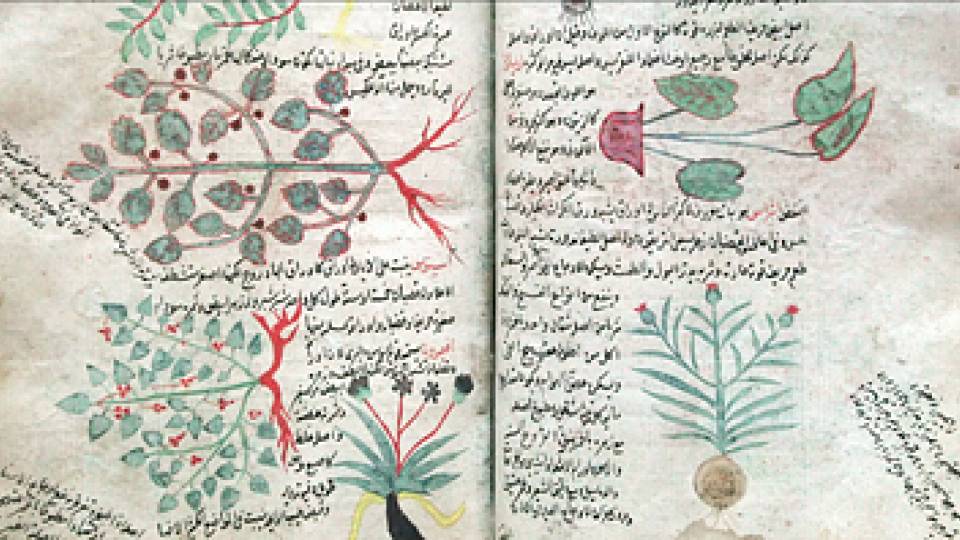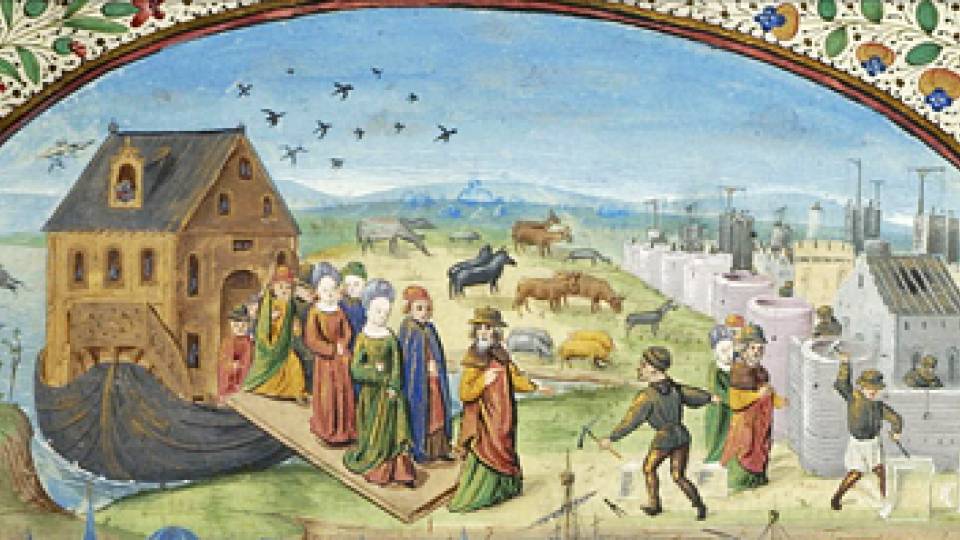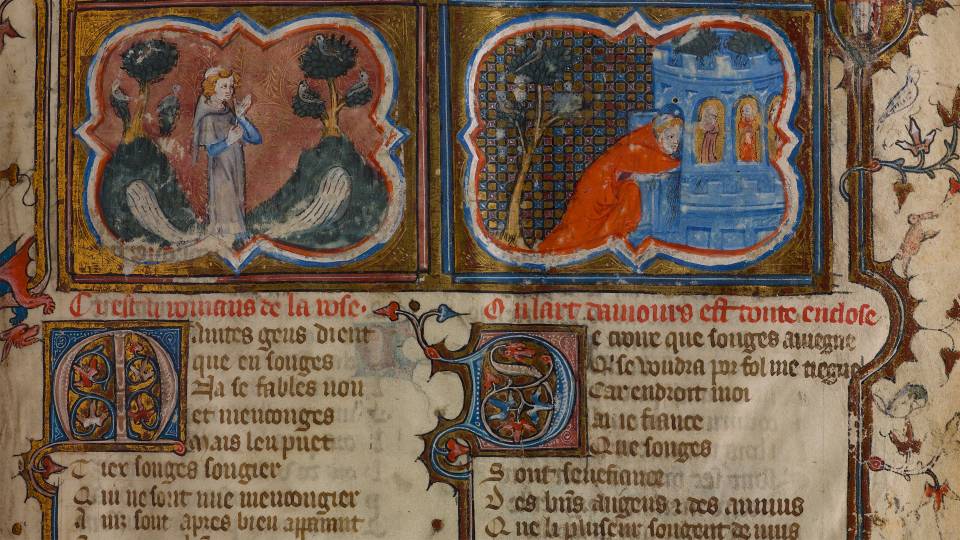Researchers and scholars will have more access than ever before to Princeton University Library's extensive collection of medieval and Renaissance manuscripts, thanks to a grant recently awarded to the Index of Christian Art by the Andrew W. Mellon Foundation.
A grant of $450,000 from the foundation will support a three-year project to catalog 400 of the 500 manuscripts contained in the collection and to digitize their images. There will be two components to the project: a digital catalog of all the images in the manuscripts that will be available on the online database of the index; and a printed catalog that will be published in book form.
Karin Trainer, University librarian, said she welcomes the opportunity to collaborate with the index and to make the University's rich collections more accessible. Colum Hourihane, director of the index, said that having Princeton's own manuscripts fully represented in the index was a milestone for the index and for scholarship in general.
Princeton's medieval and Renaissance manuscript collection spans the fifth to the 16th centuries and includes many priceless treasures. The collection is especially renowned for its 14th- and 15th-century holdings, most of which have never before been either fully cataloged or photographed.
"Ours is one of the largest and richest such collections in the United States, and it's considered the best American collection for which there is no published catalog," said Don Skemer, curator of manuscripts in the library's Department of Rare Books and Special Collections.
The images contained in some 200 of the Firestone manuscripts will be photographed, digitized and classified by the Index of Christian Art, which is based in the Department of Art and Archaeology at Princeton. The 1,750 illustrations will join what is now the largest database of medieval art on the World Wide Web. Scholars will be able to use the database to conduct digital searches of the manuscripts' images.
The Index of Christian Art has served students, the general public and the most advanced scholars for the last 84 years. Its extensive photograph and digital catalog covers the subject matter of more than 200,000 works of Western art from the early apostolic period to 1500 A.D. with analytic entries classified under 27,000 specially created subject headings. Each year several thousand scholars use the index, either visiting it in person or online.
The Princeton project complements a similar project under way with the Pierpont Morgan Library. Last year, the index received grants totaling $1.3 million from the Getty Trust of Los Angeles and the Homeland Foundation of New York to create a catalog of 1,000 years of Western iconography in that library's collection. Staff members have been digitizing more than 35,000 illustrations from 500 manuscripts in the Morgan collection. In addition to becoming available through the Morgan Library database, this catalog is being incorporated into the index, just as the University's manuscript collections will be.
Hourihane said that both the Princeton and Morgan manuscript projects address the index's long-term mission to collaborate with major medieval repositories throughout North America and Europe to catalog and digitize important and previously unpublished resources for scholarship. Adding searchable data and images from the University's holdings to the index's database will enable scholars to study images in the collection within wider artistic contexts, making it possible, for example, to do comparative studies and to trace influences.
"For example, if a scholar is looking for representations of King David, he or she will get hundreds of illustrations from the Princeton library collection, from the Morgan Library, from the Cathedral of San Marco (in Venice, Italy) mosaics and from other sources cataloged by the index," he said. "A search will provide huge coverage of different media, different periods and different locations. The scholar could then compare, for instance, how the Morgan Library manuscript may have been influenced by an earlier image from the Princeton collection."
Hourihane pointed out that scholars at remote sites will be able to access comprehensive descriptions and high-quality images of illuminated manuscripts without the expense of a site visit to Princeton or the delay and cost involved in requesting a reproduction. Providing remote access to good quality images from one of Princeton's most heavily used yet most fragile collections will also aid in its preservation, he said.
Although the Princeton project is expected to take about three years, images will be made available as soon as they are cataloged. The Morgan project is scheduled to be completed in 2005; a year's work is already available through the index.
The other component of the Princeton project, a catalog that will be published in book form, will feature full descriptions of the manuscripts, identifying all texts and images, providing physical characteristics and tracing the history and ownership.
Right now, those wishing to explore the collection's holdings can look through old published surveys with very brief and often inaccurate descriptions of the manuscripts. The old descriptions might be as short as a few lines; professional standards today would call for several pages of description for each manuscript, Skemer said.
"Medieval manuscripts are more like old buildings or archaeological sites than printed books," he said. "They were constantly evolving and growing and adapted for new uses. We have one manuscript that was first a scroll of parchment, then cut into pages and bound. Some of the writing was erased, and the parchment was used for another work. These manuscripts are incredibly complex."
Although not part of the grant project, Web-searchable bibliographic records also will be prepared on the manuscripts at the conclusion of the project to complement the print catalog, Skemer said.
The online version of the Index of Christian Art database is now available throughout the world through a subscriptions scheme. In addition, hard copies, which are updated annually, are located at the index's main office in McCormick Hall at Princeton, at the Vatican Library, at the University of Utrecht in the Netherlands, at Harvard University's Dumbarton Oaks Research Library in Washington, D.C., and at the Getty Research Institute in Los Angeles. More information about the index is available by clicking here .
Contact: Marilyn Marks (609) 258-3601


